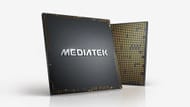The Snapdragon 7 Gen 3 vs Dimensity 8300 Ultra debate has become a hot topic of discussion in the mobile gaming industry. Both chipsets are strong contenders in the mid-range smartphone segment, with distinct offerings in terms of performance and efficiency.
While both processors offer a significant advantage for gaming due to their superior processing power, graphics capabilities, and memory support, there could be only one winner of the Snapdragon 7 Gen 3 vs Dimensity 8300 battle.
In this guide, we will look at the various aspects of these processors and try to determine which is better for gaming.
Note: Some aspects of this article are subjective and solely reflect the opinions of the writer
Snapdragon 7 Gen 3 vs Dimensity 8300 Ultra: Specs comparison

To kick off the Snapdragon 7 Gen 3 vs Dimensity 8300 Ultra comparison, here's a brief overview of the core specifications of the two chipsets:
There are a few visible differences that make each chipset stand out. Let’s compare them in a more detailed manner.
Snapdragon 7 Gen 3 vs Dimensity 8300 Ultra: Performance and efficiency

Qualcomm's mid-range gaming chip utilizes one Cortex-A715 core at 2.63GHz, the same three at 2.4GHz, and four Cortex-A510 at 1.8GHz. The same octa-core architecture can be found in its MediaTek counterpart. However, the Dimensity processor incorporates higher clock speeds, resulting in a more powerful performance.
Both chipsets are manufactured using a 4nm process. The 7 Gen 3 is equipped with an Adreno 720 GPU, and the Dimensity 8300 Ultra comes with Arm Mali-G615 MC6. The former tends to give a slightly better performance for gaming and multimedia activities.
In general, MediaTek processors hold an edge in terms of battery efficiency. Both companies have used 4nm technology to manufacture the SoC. Despite their similarities, subtle divergences and software refinements may engender disparate power consumption patterns and variations in battery life across a spectrum of devices.
The display support of both processors is as follows:
Dimensity 8300 Ultra
- FHD+ @ 180Hz
- WQHD+ @ 120Hz
Snapdragon 7 Gen 3
- 4K @ 60 Hz
- WFHD+ @ 168 Hz
- WQHD+ @ 120 Hz
In terms of connectivity, both chipsets offer identical options, featuring Wi-Fi 6E, Bluetooth 5.4, and 5G connectivity with downlink speeds reaching up to 5Gbps. However, the Dimensity chipset stands out with its support for swifter UFS 4.0 storage, potentially enhancing game loading times and overall responsiveness.
With that said, Qualcomm SoCs tend to generate more heat compared to their MediaTek counterparts owing to their power-focused design.
Snapdragon 7 Gen 3 vs Dimensity 8300 Ultra: Final winner

Determining the winner in the Snapdragon 7 Gen 3 vs Dimensity 8300 Ultra battle can be tricky. However, the MediaTek processor offers better performance in CPU, memory frequency, storage, and more, making it more suitable for gaming.
Meanwhile, the latest release from Qualcomm has better display resolution support and GPU.
Do note that factors like RAM, storage, cooling system, and other hardware specs also affect the overall performance and efficiency of the chipsets.
